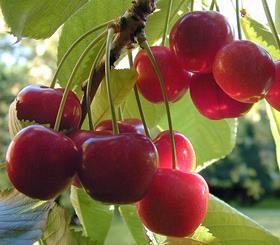
What stonefruit or cherry trials are currently underway at NIAB EMR and what are they looking at?
Feli Fernández (FF): East Malling Services, the commercial arm of NIAB EMR in horticulture, offers a commercially sensitive novel crop and variety trials service. Broadly, we work with leading organisations in the fresh produce sector that want to introduce novel fruit and/or expand the offering of UK grown produce. For example, we are assessing the feasibility of growing fruit crops that are currently imported from warmer climates (e.g. apricots and table grapes) in Kent. In addition to our trialling services, we also have an ongoing relationship with Univeg who fund a project to breed and develop new cherry varieties as well as a cherry demonstration orchard looking at various cultivars and pruning systems under covers.
What is biggest talking point in cherry breeding or R&D at the moment?
FF: New cultivars are always exciting but, in tree fruits, it is difficult to gauge their commercial impact until they have been established for a while at which point they are probably no longer new. I think really that season extension through a combination of improvement in storage regimes and cultivar selection is key to increase consumption and reducing price spikes. There is still considerable ground to be made here as cherry is one of the few crops that doesn’t have a complete year-round supply to the consumer and imports remain high.
How does the UK stonefruit sector compare with other producing regions across the world?
FF: Overall, the cherry and berry industries in the UK are very sophisticated and increasingly at the forefront in the application of R&D and new technology. The rest of the stonefruit sector is either in its infancy, for crops such as peaches and apricots, or in need of a good revival in the case of plums. NIAB EMR is working with industry partners and IUK funding in a project to optimise plum production in the UK through precision management.
How do you see the stonefruit category developing?
FF: I am very optimistic for the sector as a whole. Demand is growing and a combination of new cultivars and growing systems tailored to UK growing conditions could rake in big gains for growers diversifying their orchards with stone fruit.
What are the biggest challenges it is facing?
FF: In my opinion, the biggest challenge for ‘novel’ stonefruit crops is probably the identification of cultivars suited to our climate with good retailer and consumer acceptance. Once those varieties have been identified, the opportunities and rewards will be high – local sourcing is a key part of the wider food security agenda and popular with consumers. For cherry, as an established crop, the situation is much more complicated. Production from intensive orchards has been increasing and it is important to avoid periods of oversupply that could drive prices down. New cultivars and improved storage regimes are key extend the season and manage fluctuation in fruit availability. To retain profitability, optimisation of cultural practices is also essential.
What new varieties are you most excited about, or which offer the most potential?
FF: At the moment, the cherry breeding programme has four or five very exciting advanced selections in grower trials, but detailed information on them is confidential at this point.
When will they be commercially available?
FF: It is a long-term process but we are probably looking at releasing one or more of them in three to four years’ time.
What are the biggest pest issues facing cherry and stonefruit growers in the UK?
FF: For cherries, two-spotted Spider Mite and SWD are probably the most pressing concerns, while for plums, Plum Fruit Moth and SWD are the priorities. For all these pests, UK scientists are working with AHDB and other funding structures to continue fine-tuning control programmes, which are reliant on accurate monitoring and forecasting. The Spider Mite problem has increased due to changing cultural practices and the increased use of tunnels to protect crops. Plums additionally suffer more from disease problems than cherry, though both suffer from the commonly occurring Brown Rot.
Feli Fernández is a research leader, plant breeder and molecular geneticist, and is responsible for the tree fruit and raspberry improvement programmes at East Malling Research.



